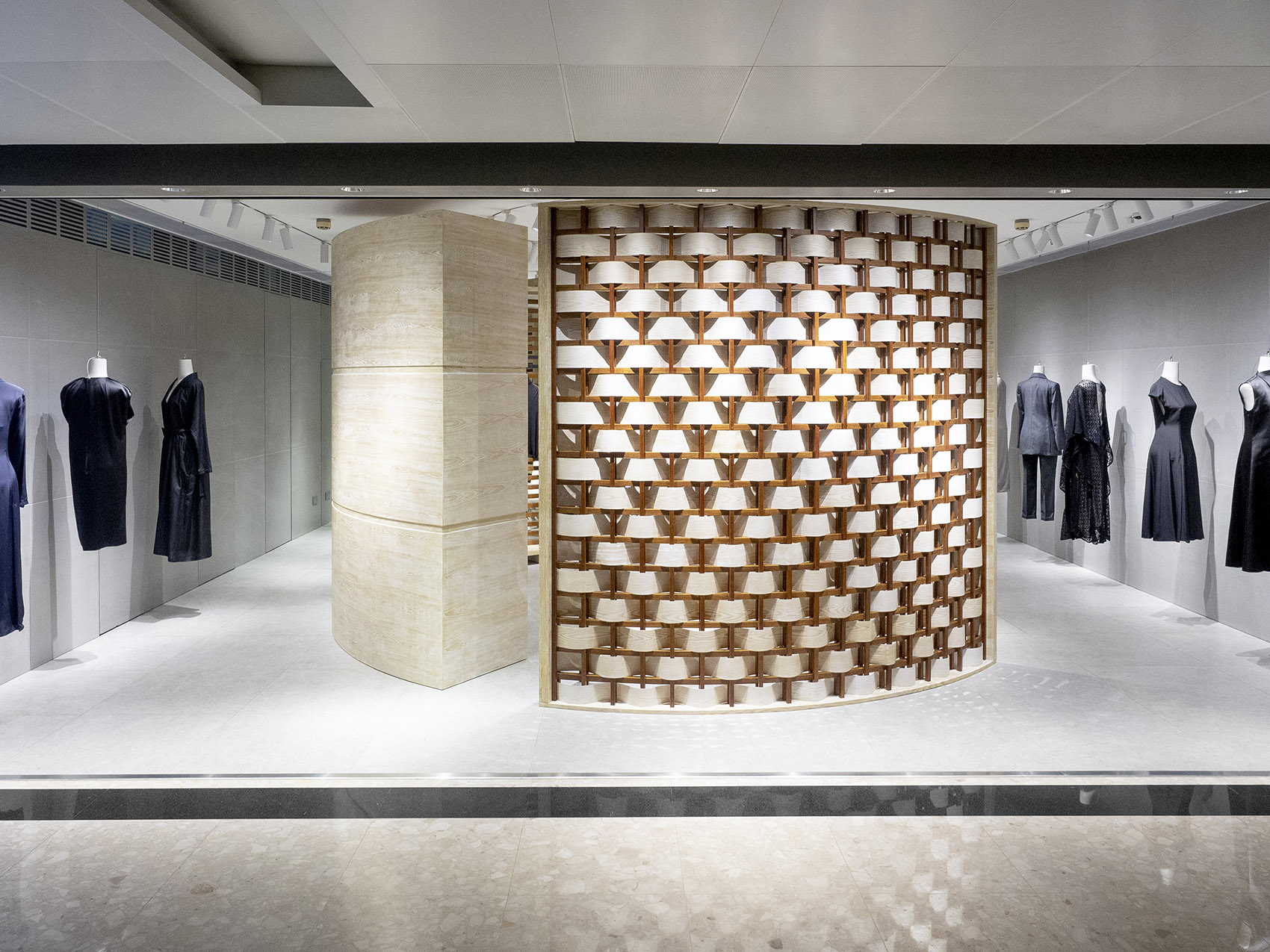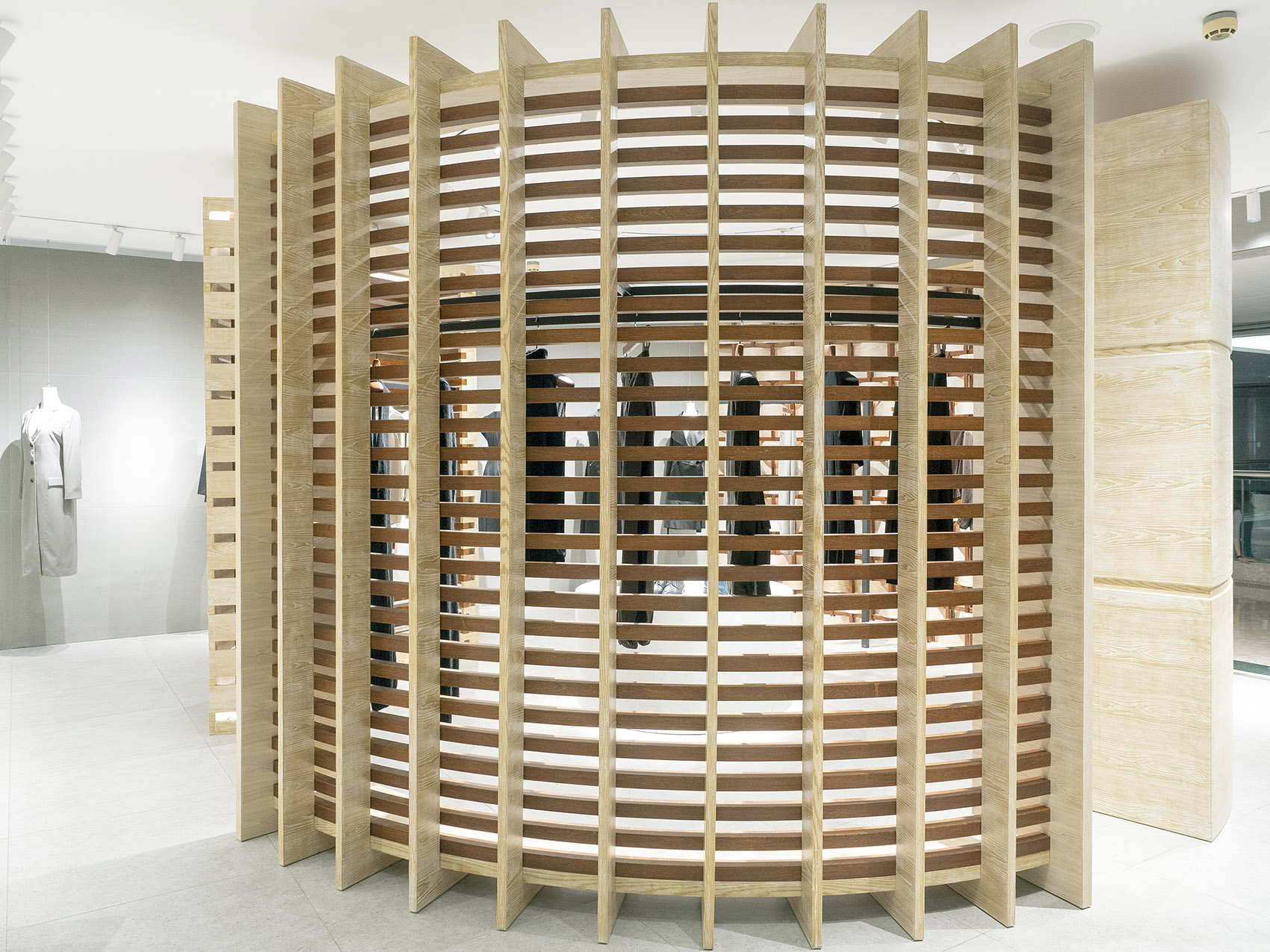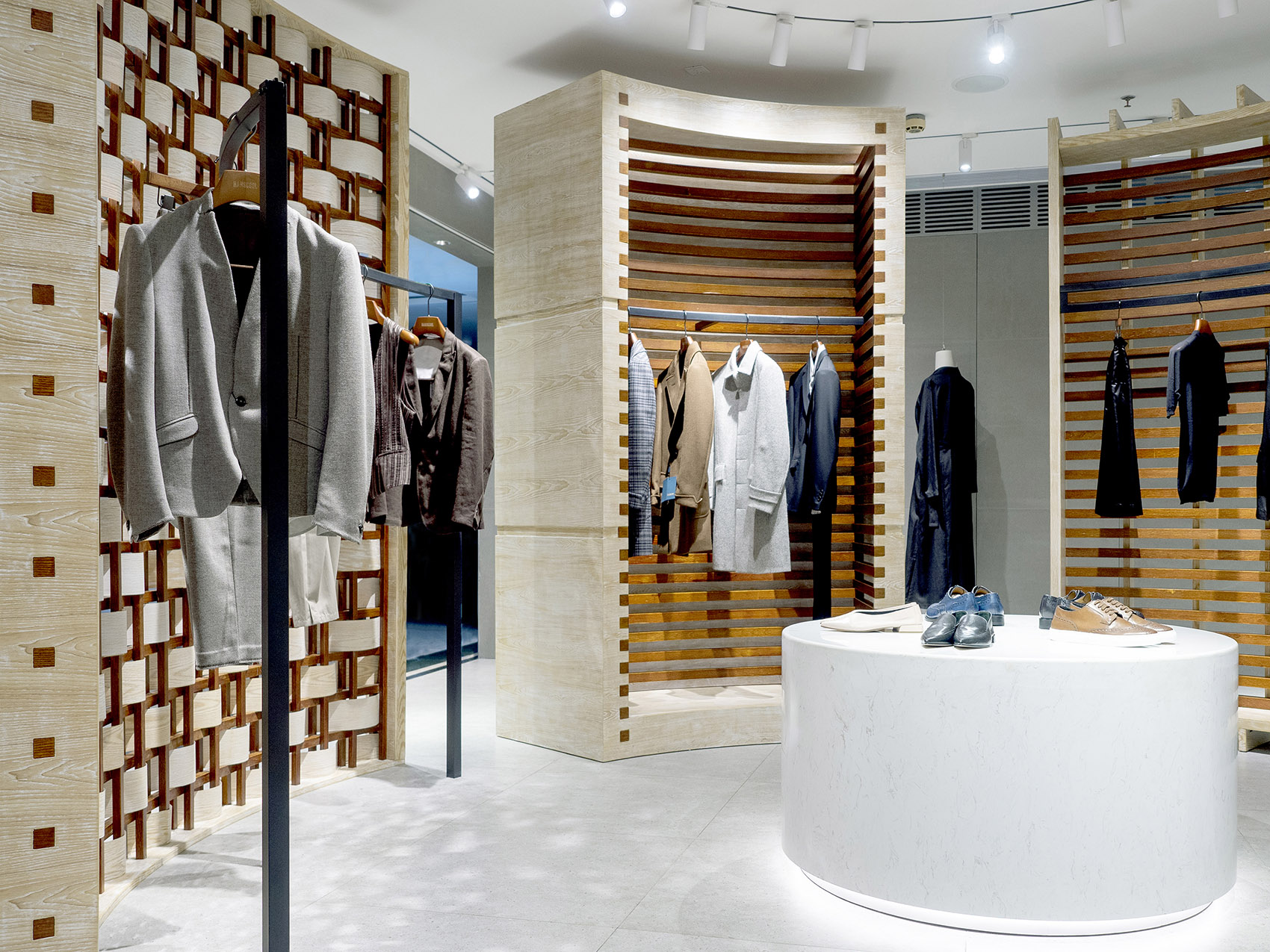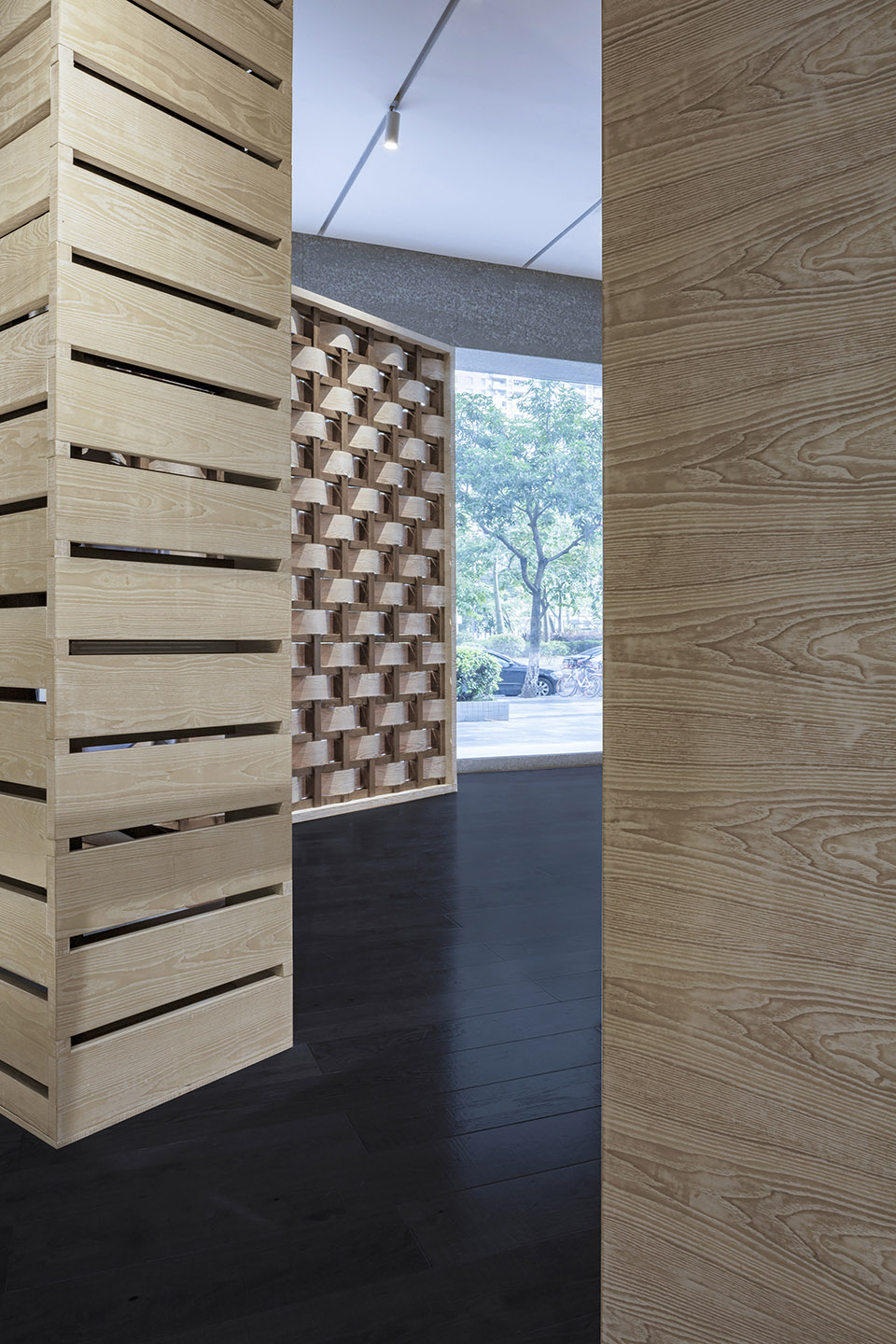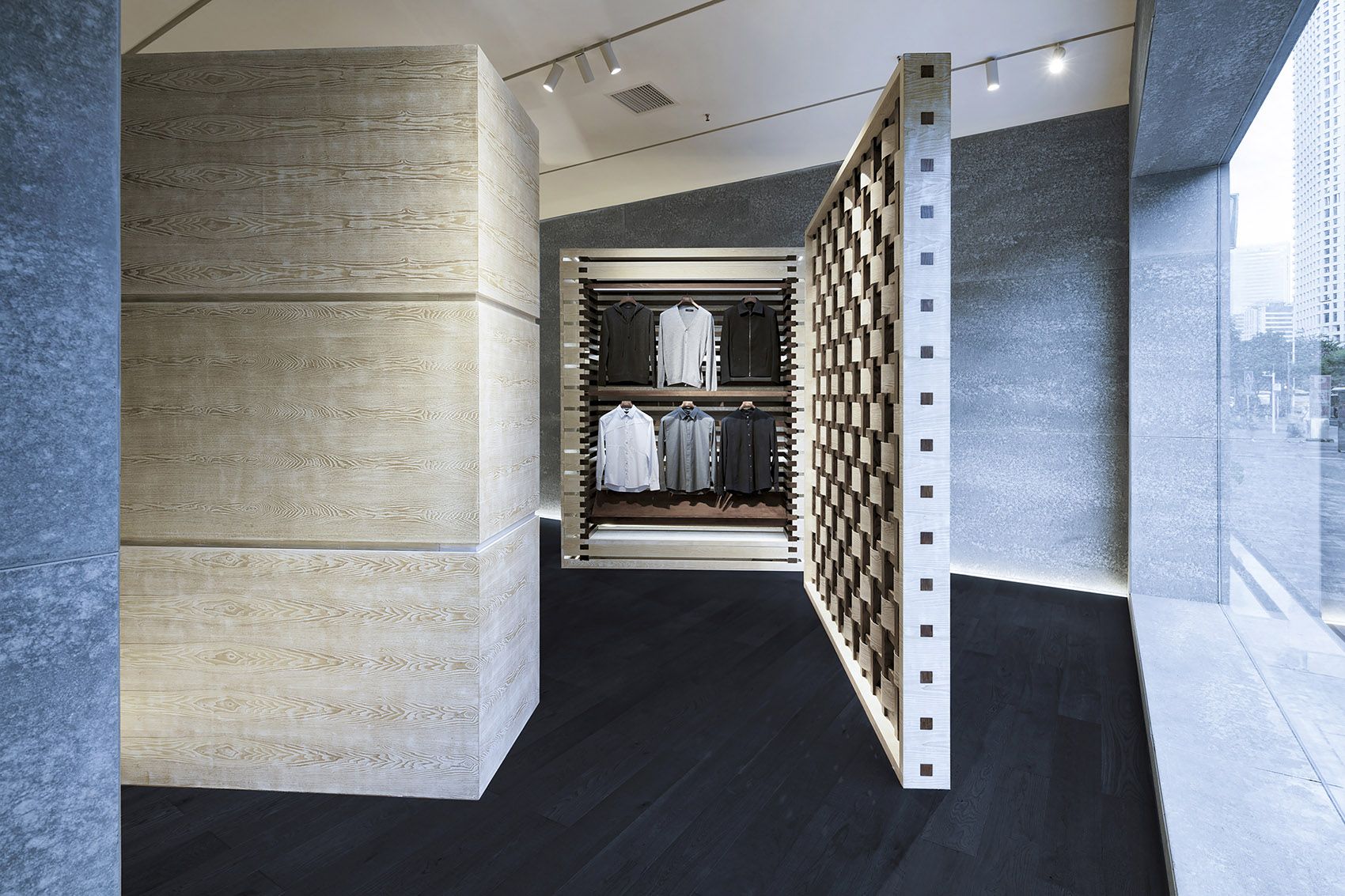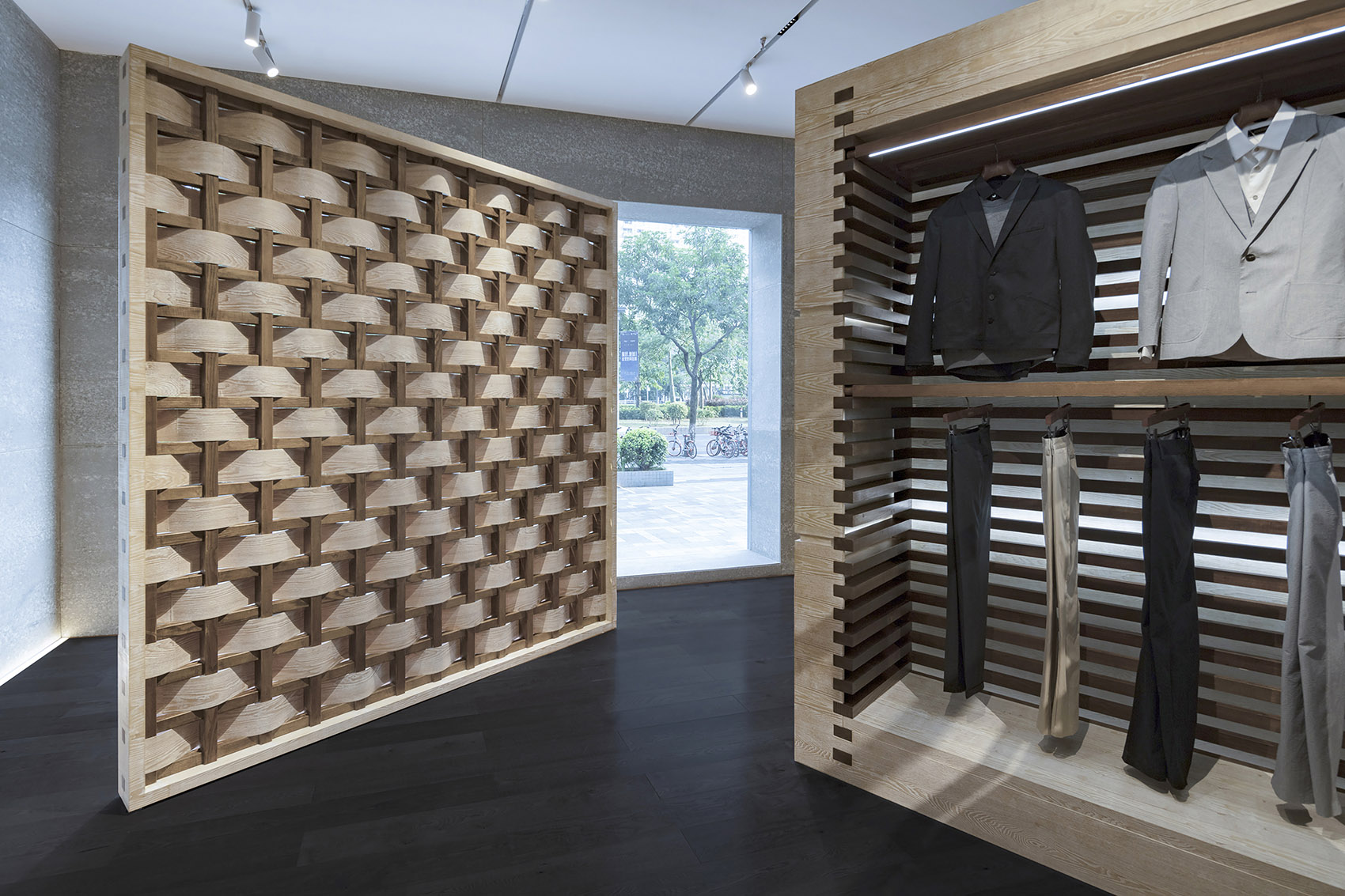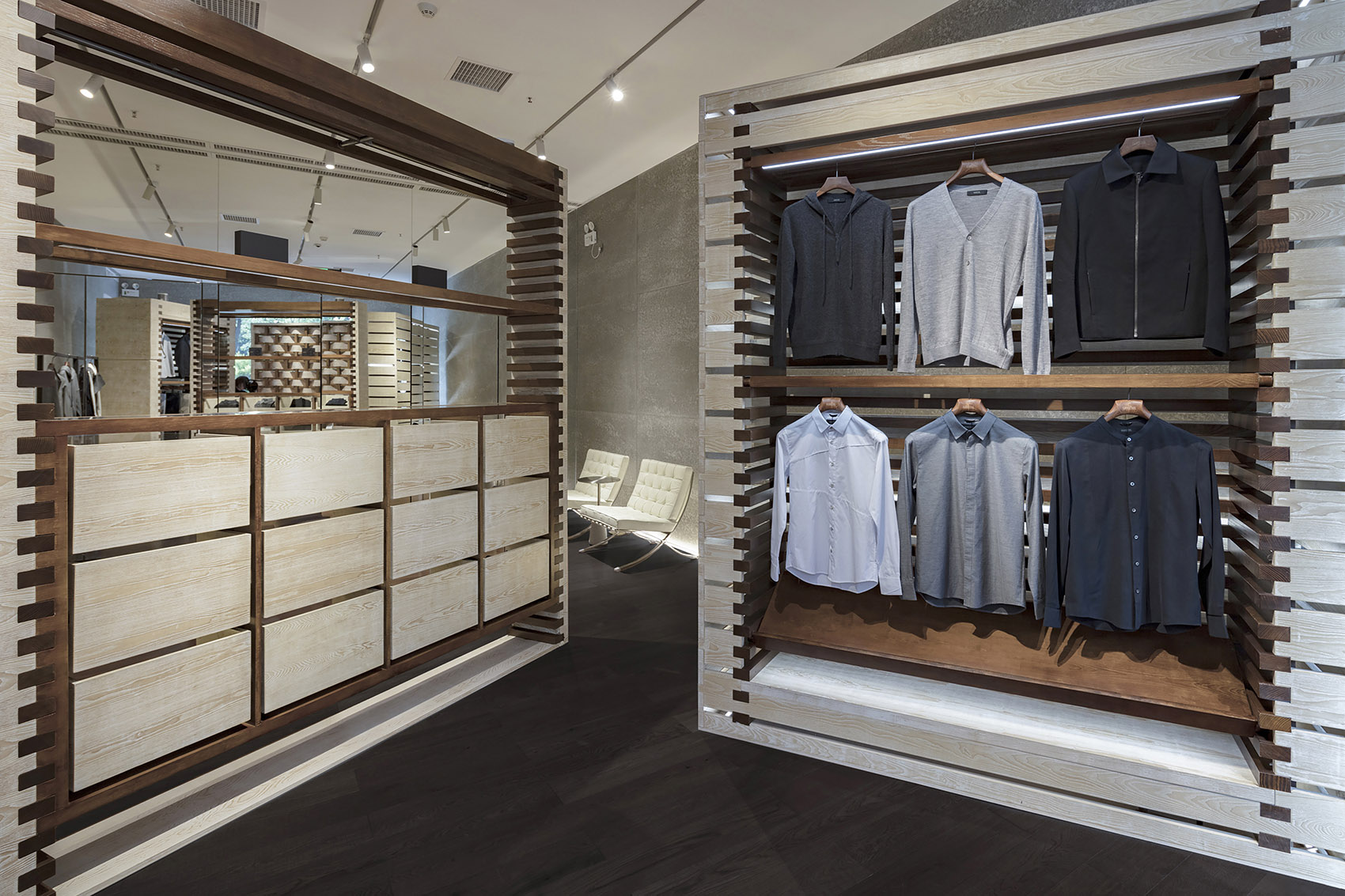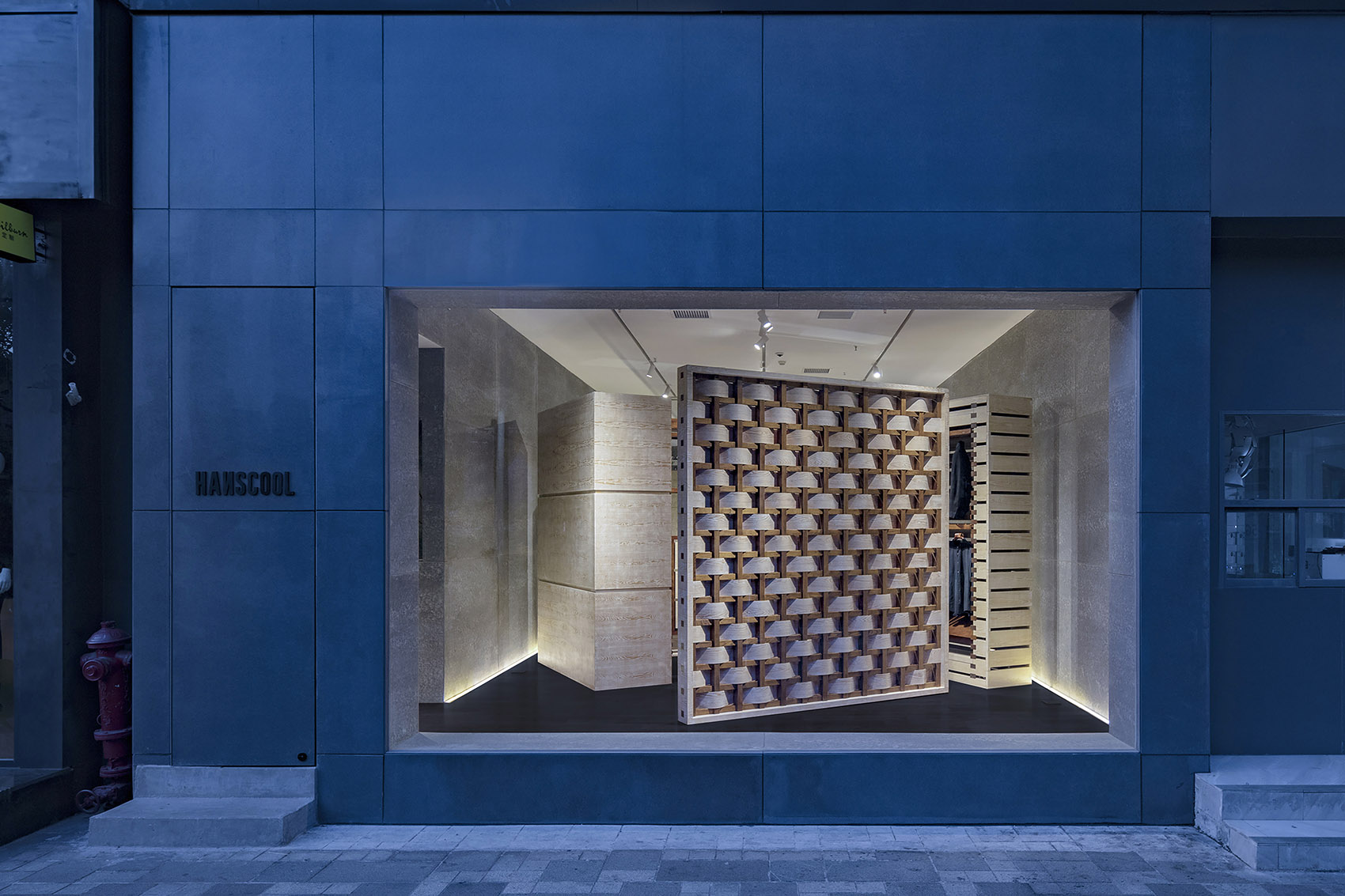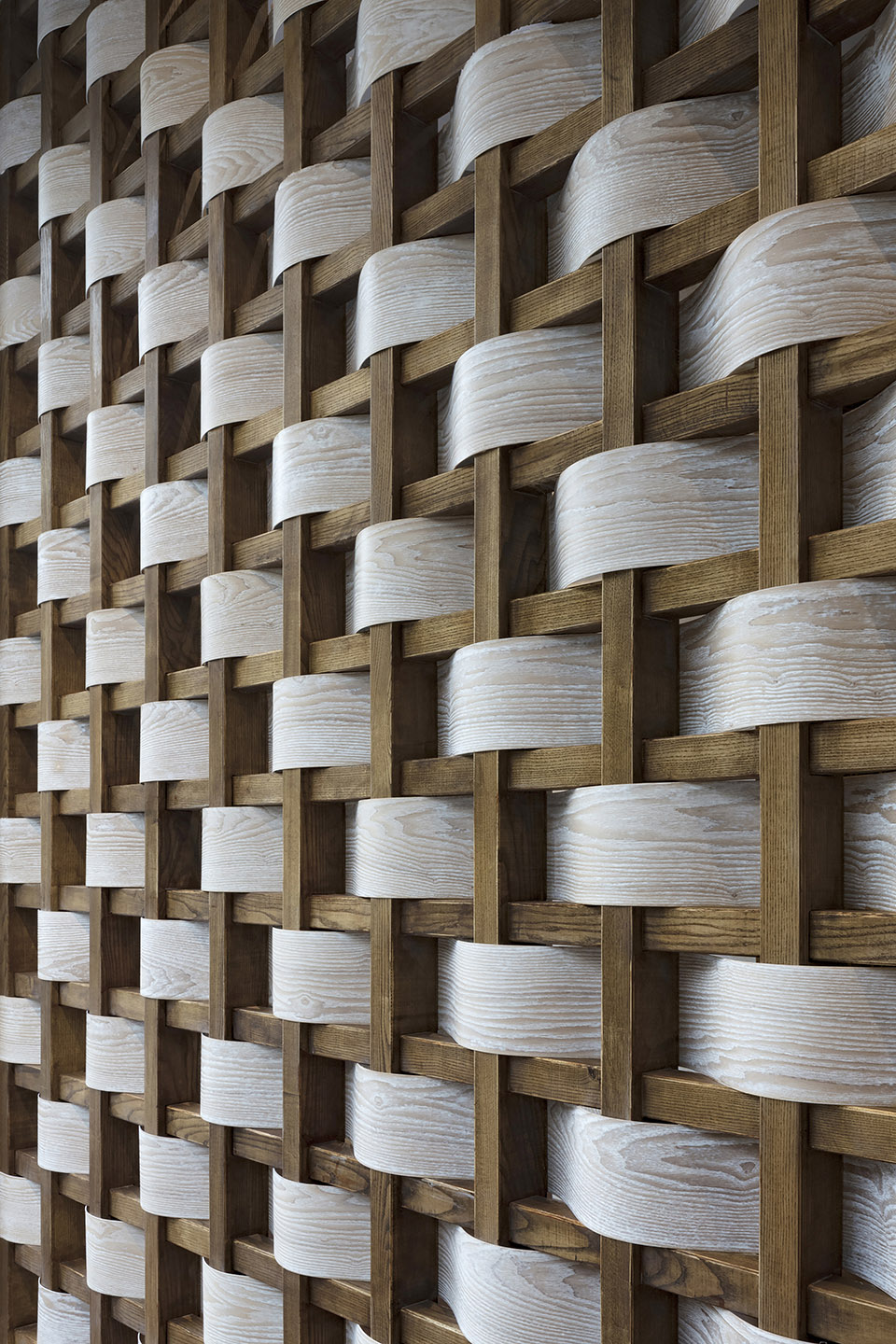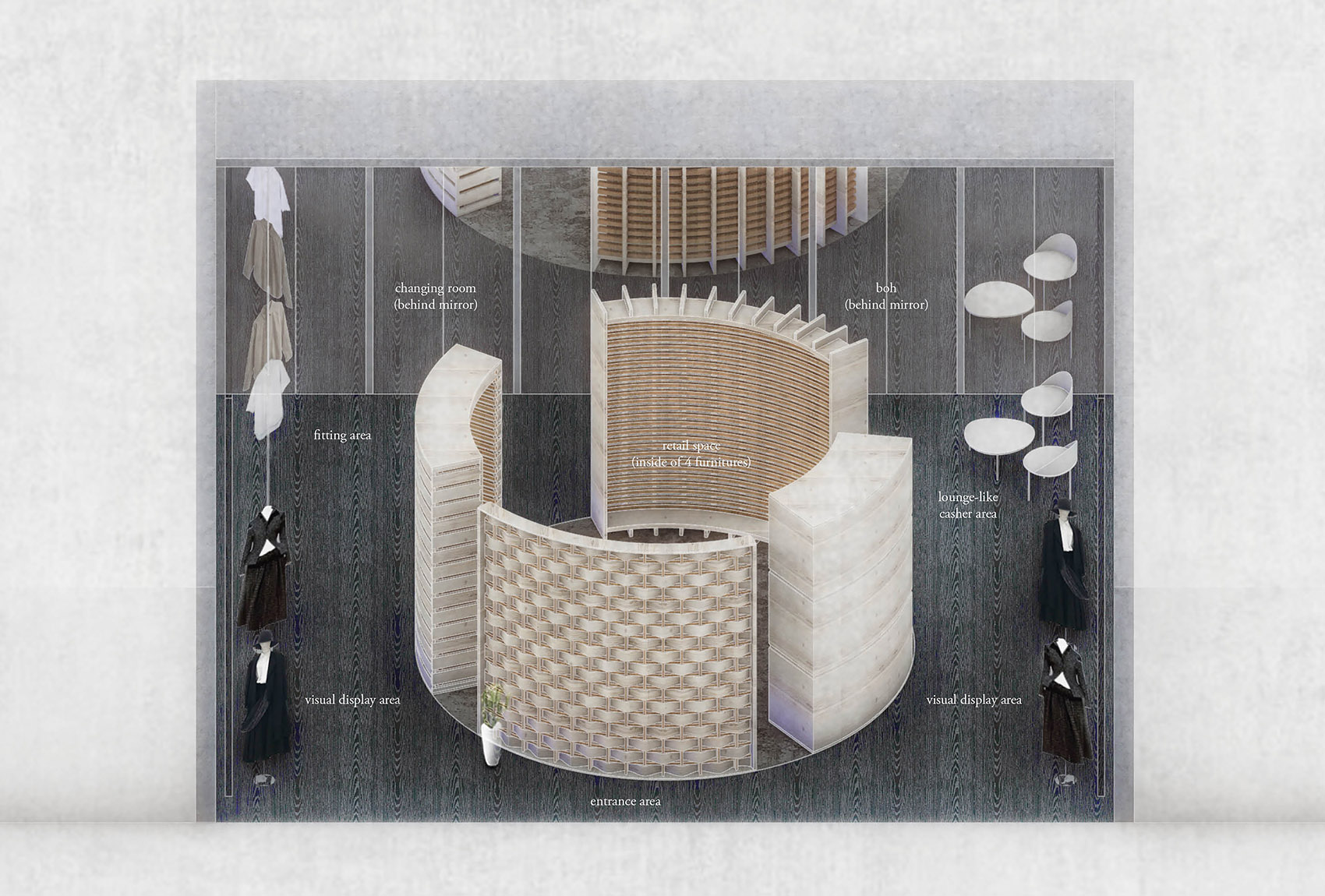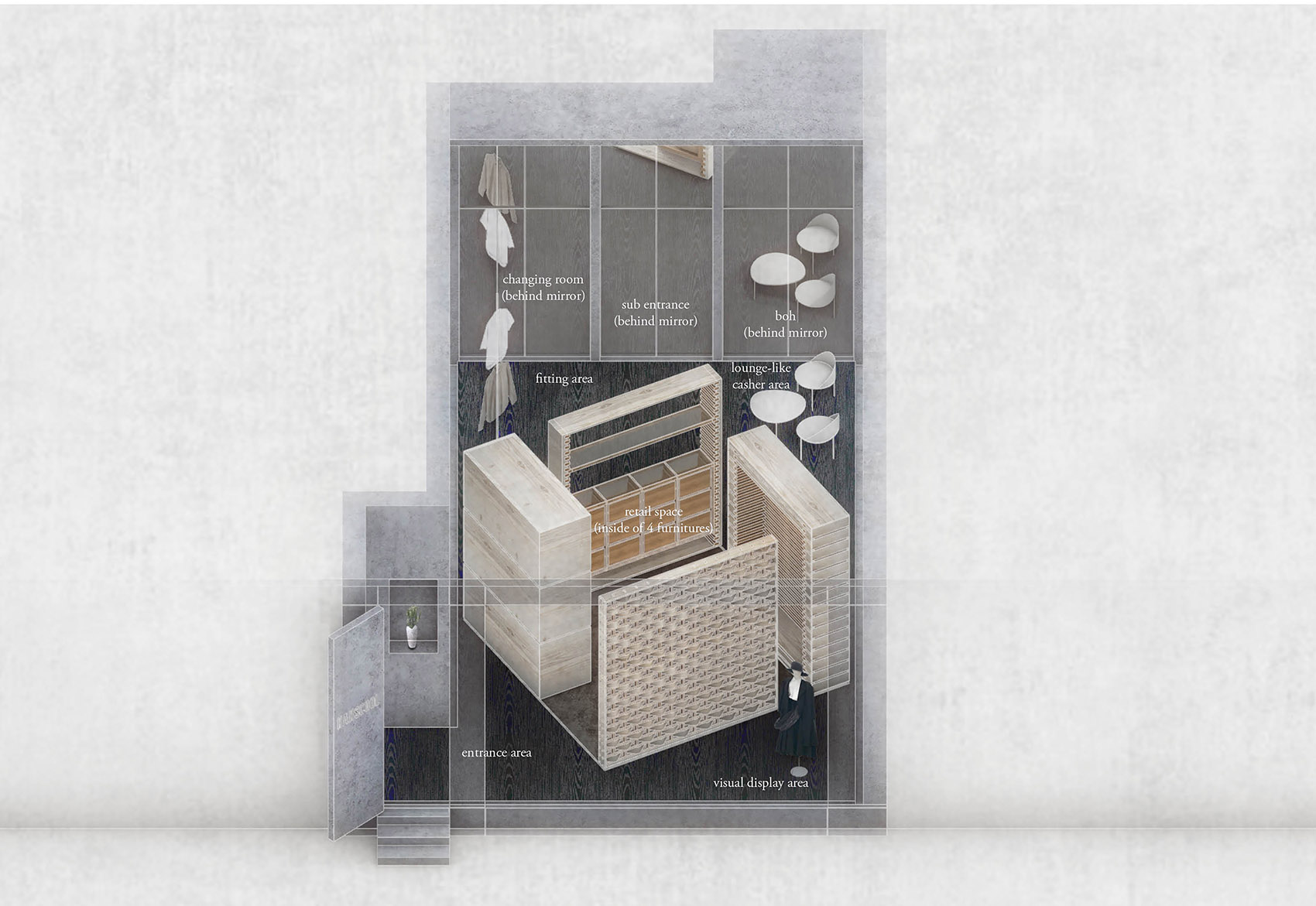ARCHIEE赋予品牌HANSCOOL独一无二的标志性设计。两家精品店,一方一圆,以不同形式表达了同一概念。
ARCHIEE has created a specific design code for the brand HANSCOOL. At present, two boutiques have launched variations of this concept for their retail spaces. Both boutiques have different declinations at their retail core, one square and the other circular.
▼圆形店铺,circular shop ©Kenshin Horikoshi
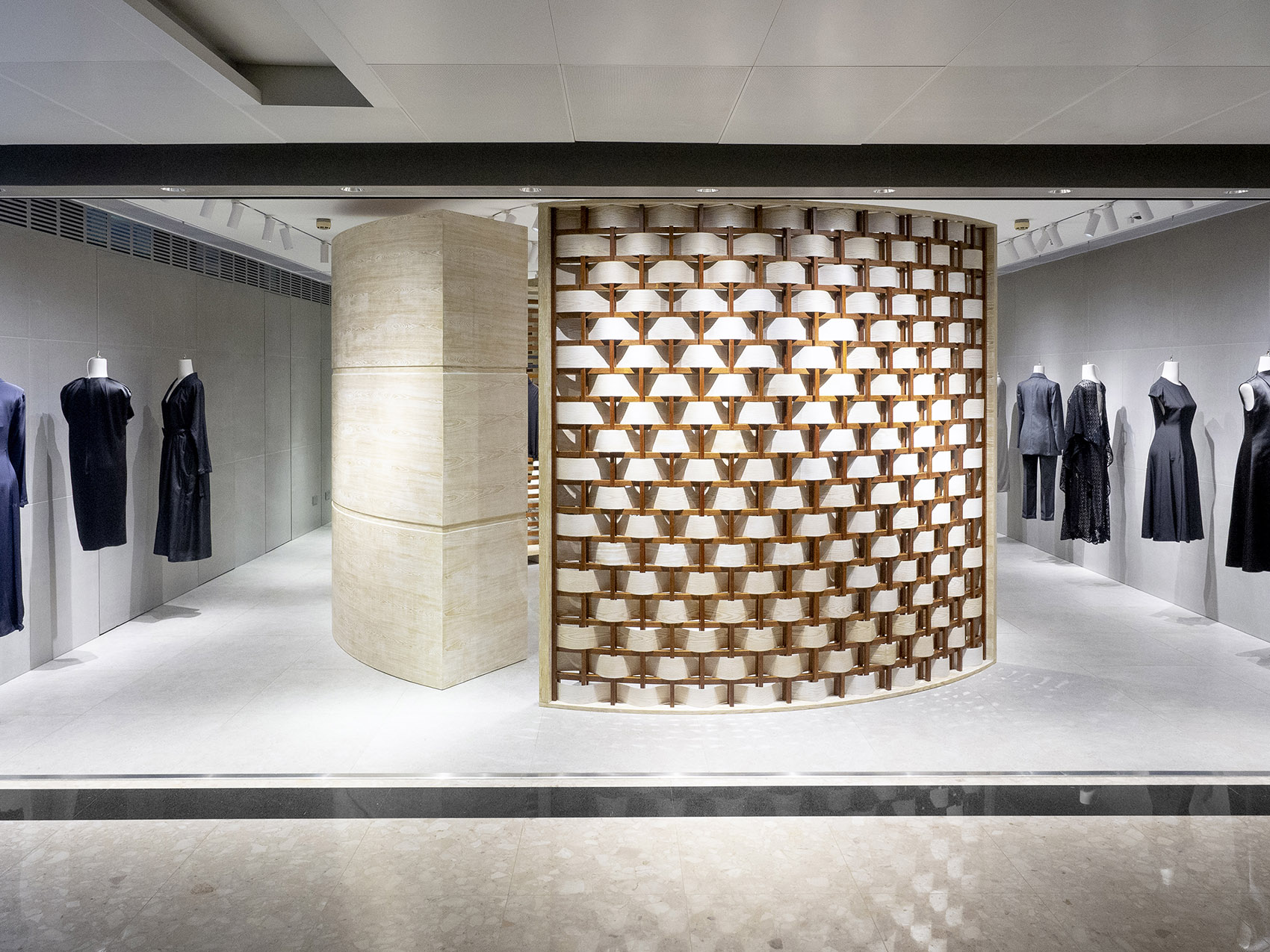
▼方形店铺,square shop, indoor overview ©Kenshin Horikoshi
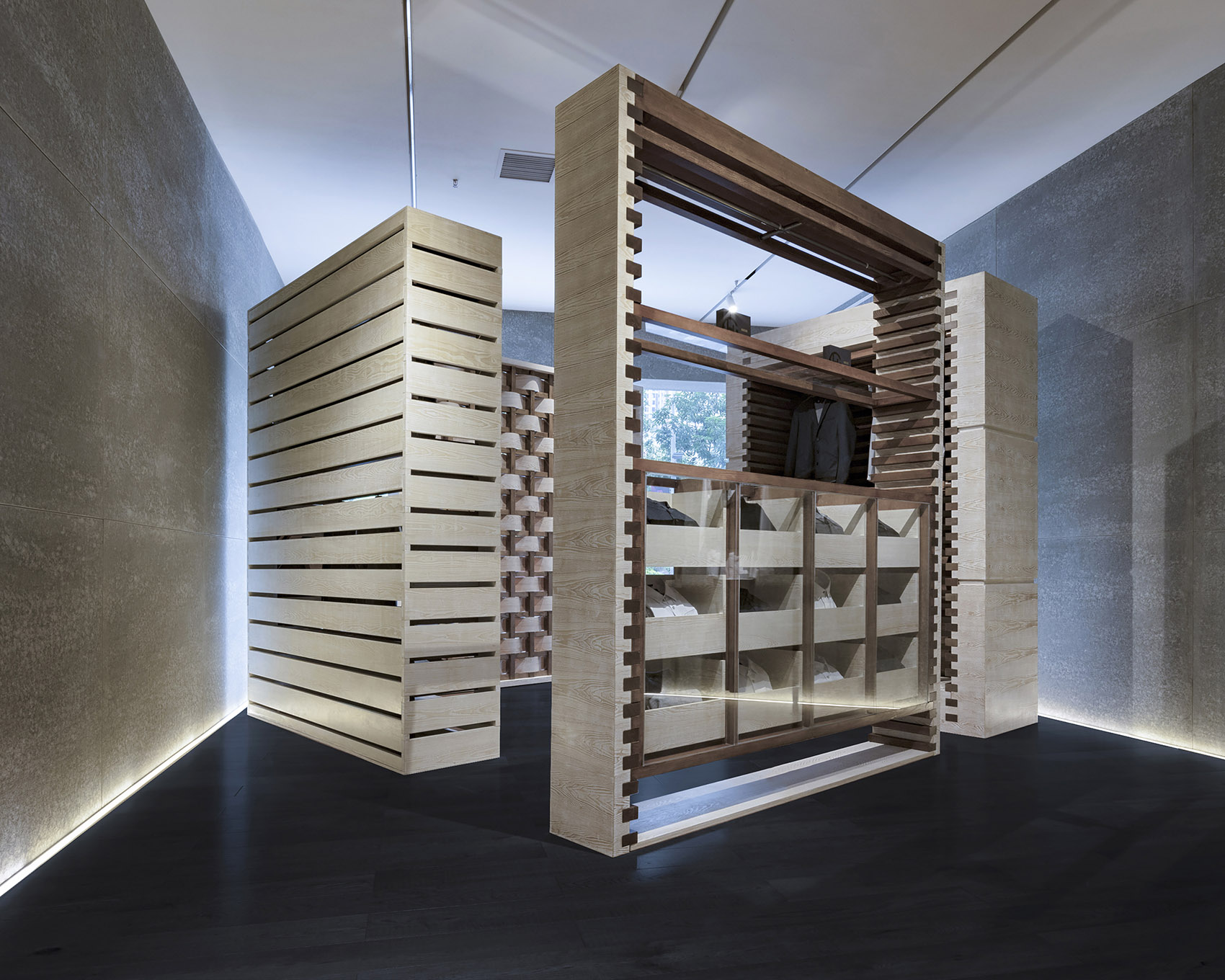
两家精品店展示出设计师为这家入驻中国的新时尚品牌量身打造的概念。最初,HANSCOOL作为供应商为全球的时装公司提供面料,后来便推出了自己的时装系列。品牌因生产和使用高品质面料脱颖而出,同时也在不断思考与改进种种细节,在新品牌中创新缝制技巧,使制造工艺更加现代化。正是品牌的专业性为ARCHIEE带来了设计灵感。
This concept is meant to be adaptable to a series of boutiques for this new fashion brand based in China. Originally a fabric supplier for global fashion companies, HANSCOOL decided to launch its own fashion line. The brand not only distinguishes itself by producing and using high quality fabrics, but also by its ability to rethink details, such as new stitching techniques for its new brand, modernized some of its fabrications. Their expertise is the key element that inspired ARCHIEE’s design for the space.
▼概念轴测图,一方一圆两家店铺,concept, axonometric drawings of two boutiques ©ARCHIEE

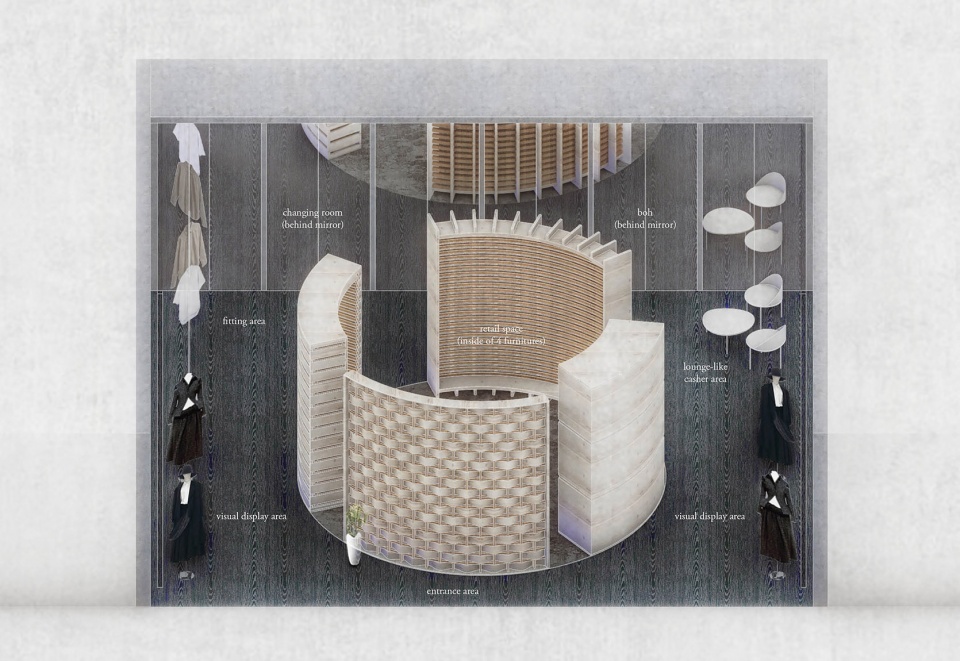
为了从视觉上展现品牌特色,ARCHIEE以木板构造重新诠释有机织物。展板的木杆之间穿插柔软的饰面编织带,网格元素十分显眼,仿佛一张大型织物。展板以不同木材制成,让人联想到亚洲传统的建筑样式,通过日本饰面技术的装点,展现出了丰富的色调和纹理。
In order to express the brand’s identity visually, ARCHIEE reinterpreted woven fabric architecturally by creating a variation of wooden panels. One of the panels has woven strips of supple veneer around wooden poles, highlighting the grid elements resembling an enlarged piece of woven fabric. All of the panels are created with variations of wood, a material that was chosen to evoke Asian traditional architecture. A rich pallet composition emerges with several textures, tones, and finishes such as a traditional Japanese finish technique.
▼圆形店铺,木板构造诠释织物,circular shop, reinterpreting woven fabric by creating a variation of wooden panels ©Kenshin Horikoshi
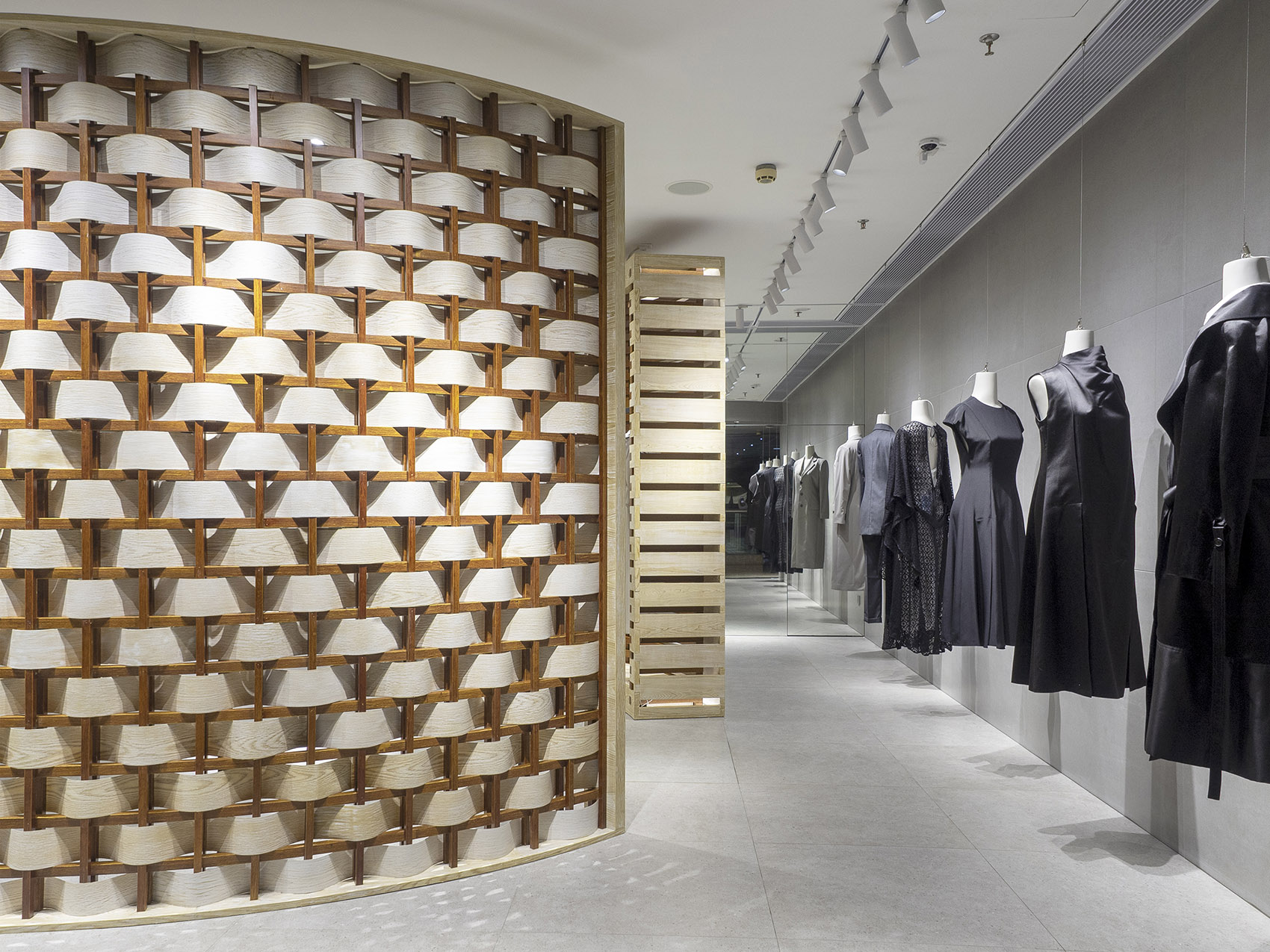
▼圆形店铺,设计概念给人留下深刻印象,circular shop, impressive design concept ©Kenshin Horikoshi
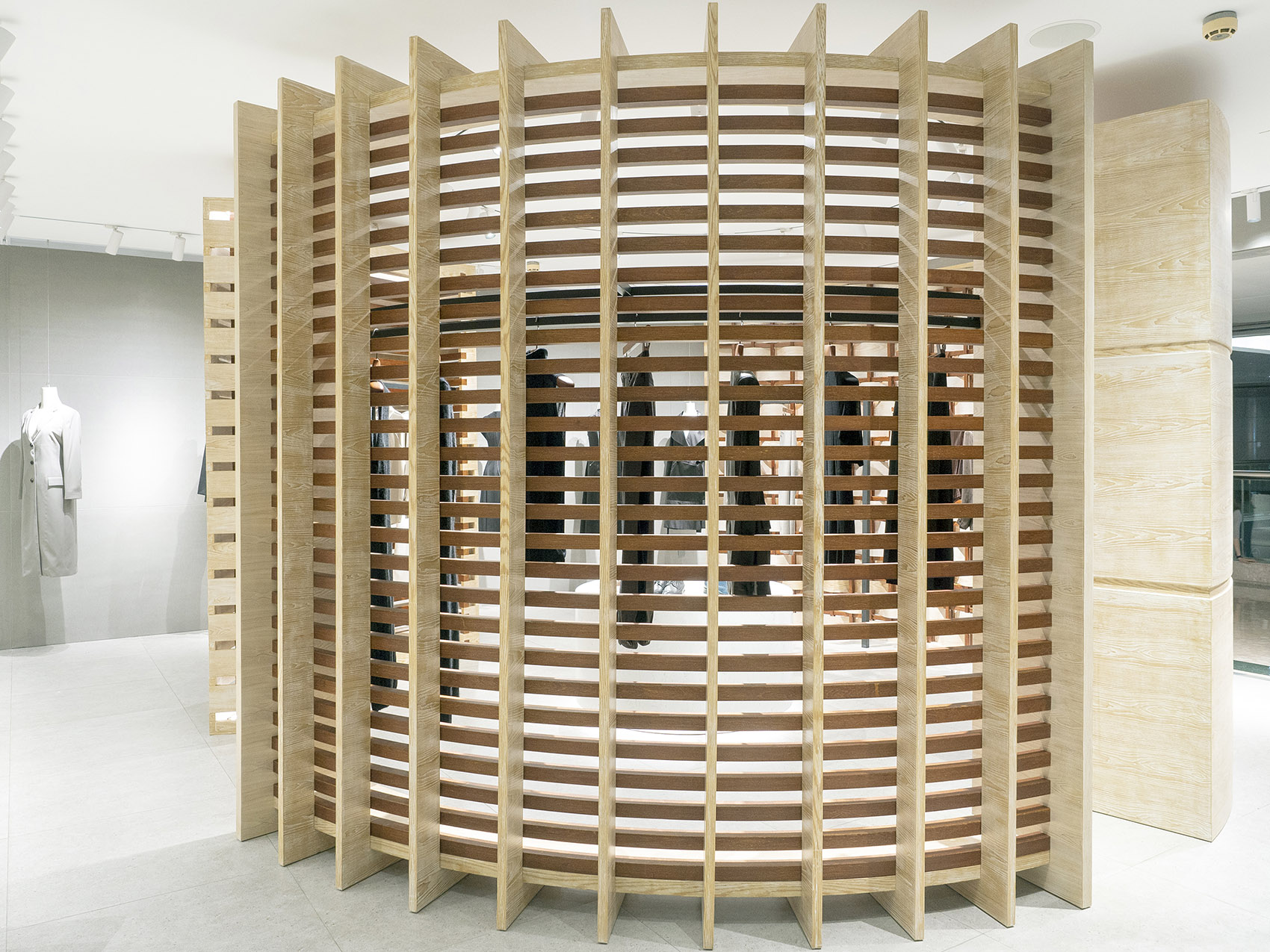

▼圆形店铺,中心展示区,circular shop, display area in the center ©Kenshin Horikoshi
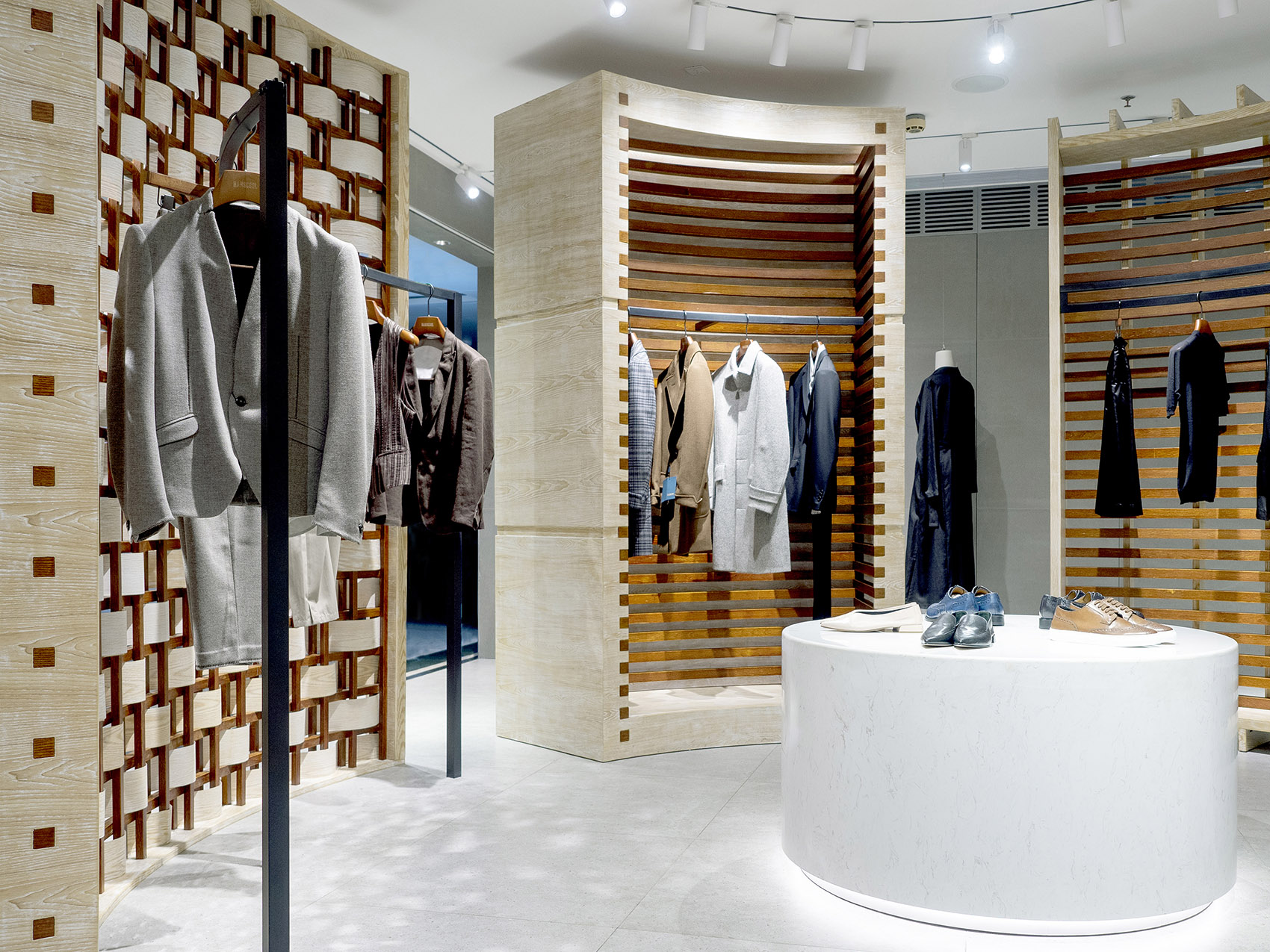
即使身处当今的数字社会,实体精品店还是一样不可或缺,ARCHIEE跳出传统零售空间的设计思路,创造出实验性的新空间。在这个非常规的商店里,几块展板围合了空间,将销售区布置在中央,使零售空间只占据约一半的空间。尽管这种策略最初看起来并不符合平常的设计思路,但却成功营造出更加热情好客的空间,顾客可以跟随交通流线探索品牌文化。这种布局巧妙地利用了虚空间,体现出“阴阳”的概念。设计师将小空间的优点放大,引导顾客穿过神秘感的入口,到达优雅舒适的试衣区和3D视觉展示区,最终通向休息室一样的收银区。不同区域带来宾至如归的体验,在展示商品的同时也成功地展现出品牌文化。
Reflecting upon the necessity of having a physical boutique in today’s digital society lead ARCHIEE towards creating an experimental space rather than a typical retail space. In order to achieve an unconventional store the team decided to enclose the retail space with panels and condense it in the center of the store. This resulted in the retail space covering about half of the total volume. Although this strategy can at first be considered counter-intuitive, it enabled the creation of a more hospitable environment to discover the brand, as well as a pleasant circulation through the space. This layout employs the usefulness of the useless defined in the ying-yang philosophy. Our project embraces the benefits of simultaneously having condensed and lightened spaces. The visitors set foot through a mysterious entrance that leads to an elegant and comfortable fitting area as well as a 3-dimensional visual display section to finally arrive at a lounge-like cashier space. These different areas create an exceptional hospitable experience that not only highlights the merchandise, but also efficiently presents the brand’s identity to the customer.
▼方形店铺,展板围合空间,square shop, enclosing the retail space with panels ©Kenshin Horikoshi
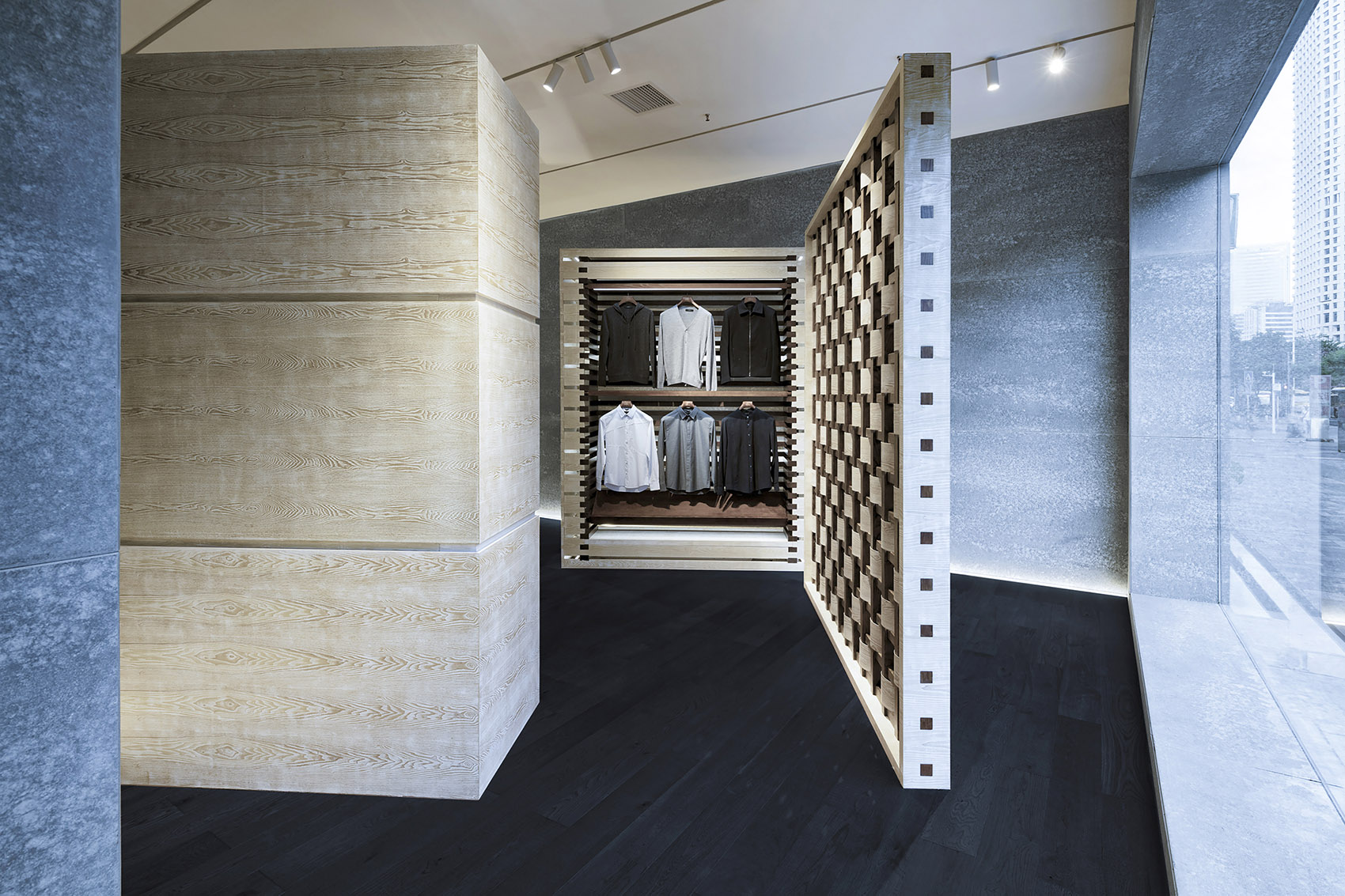
▼方形店铺,中心展示区,square shop, display area in the center ©Kenshin Horikoshi
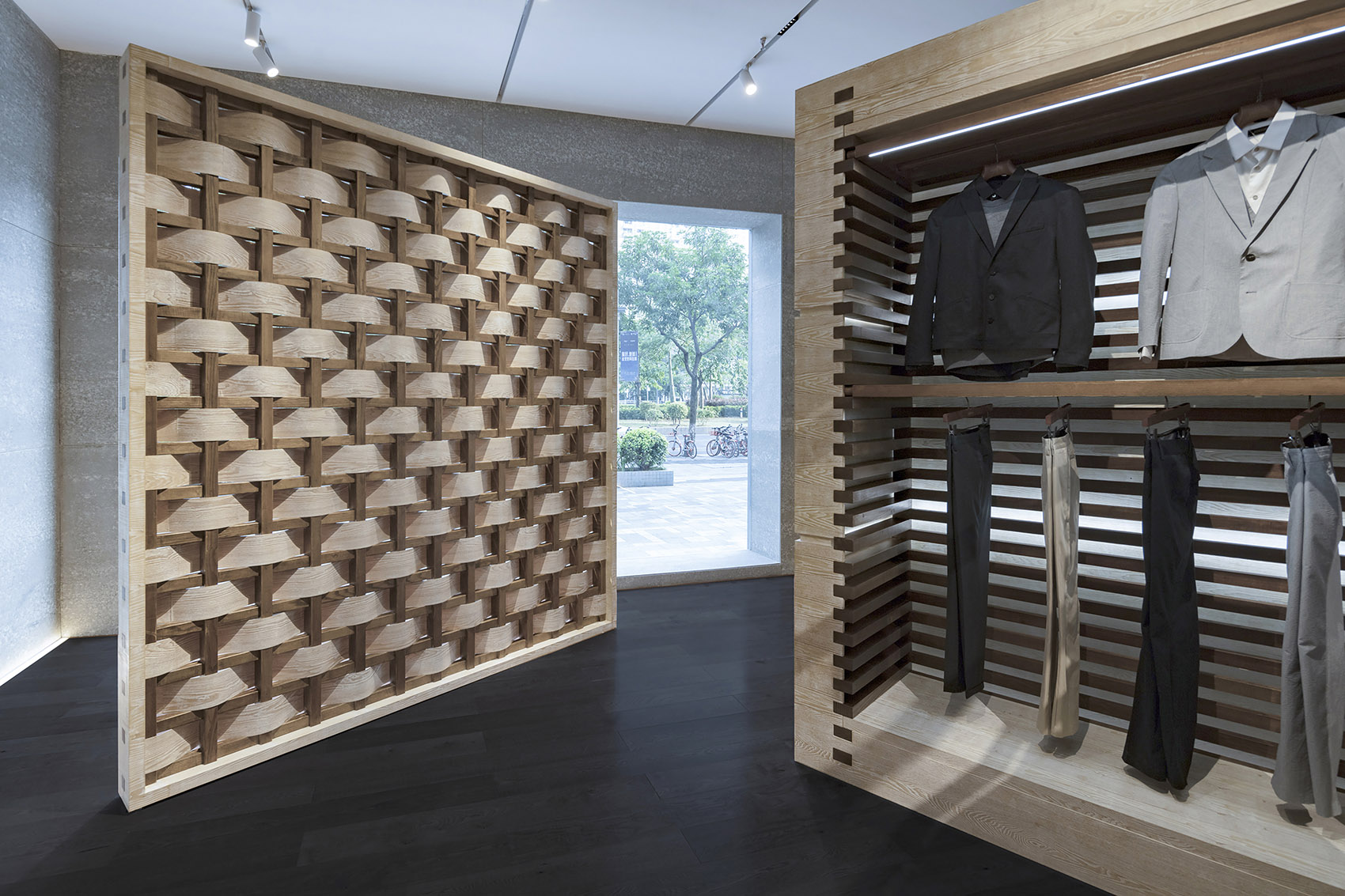
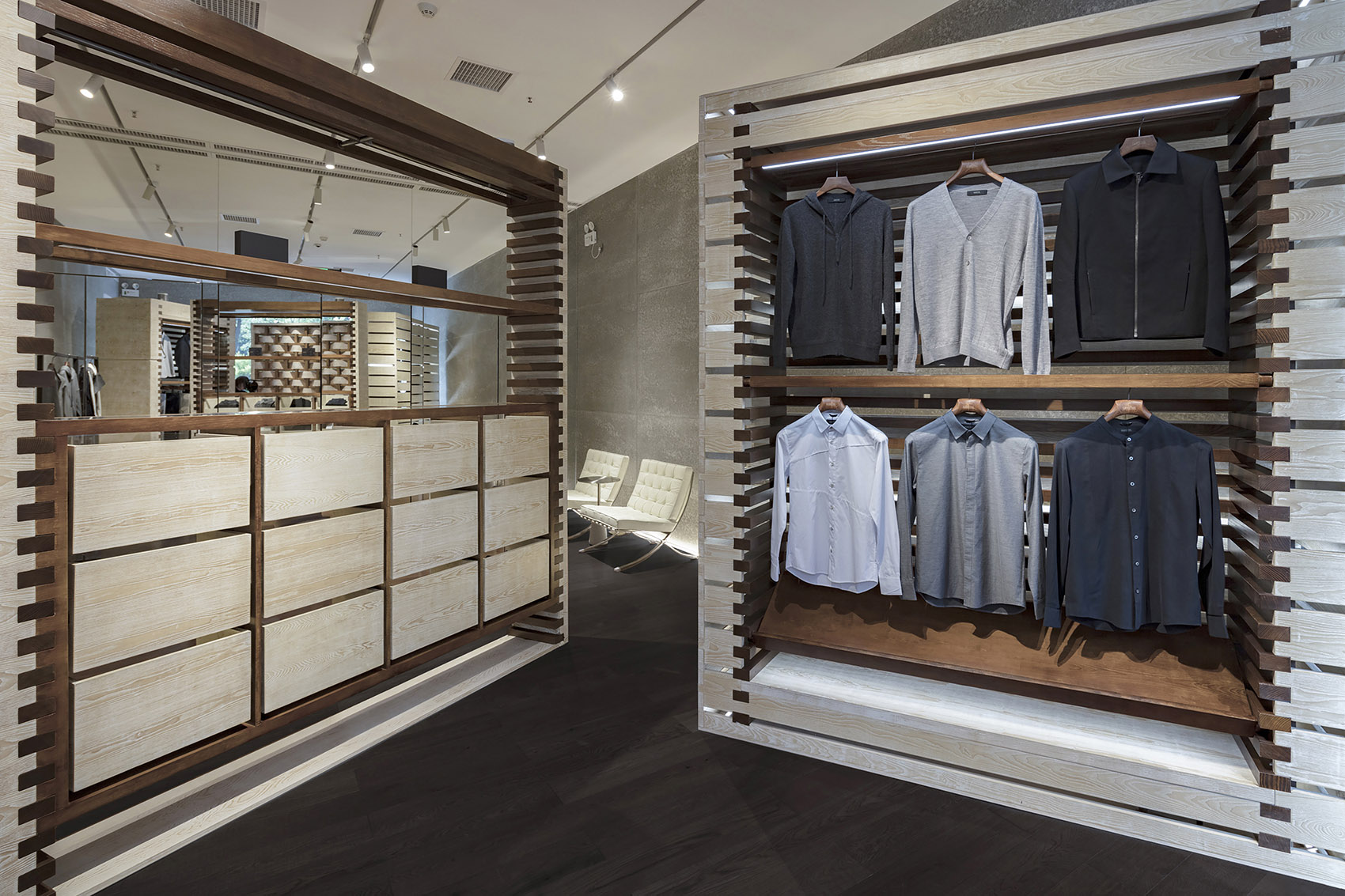
▼方形店铺,利用虚空间打造休息区,square shop, useless spaces as lounge ©Kenshin Horikoshi
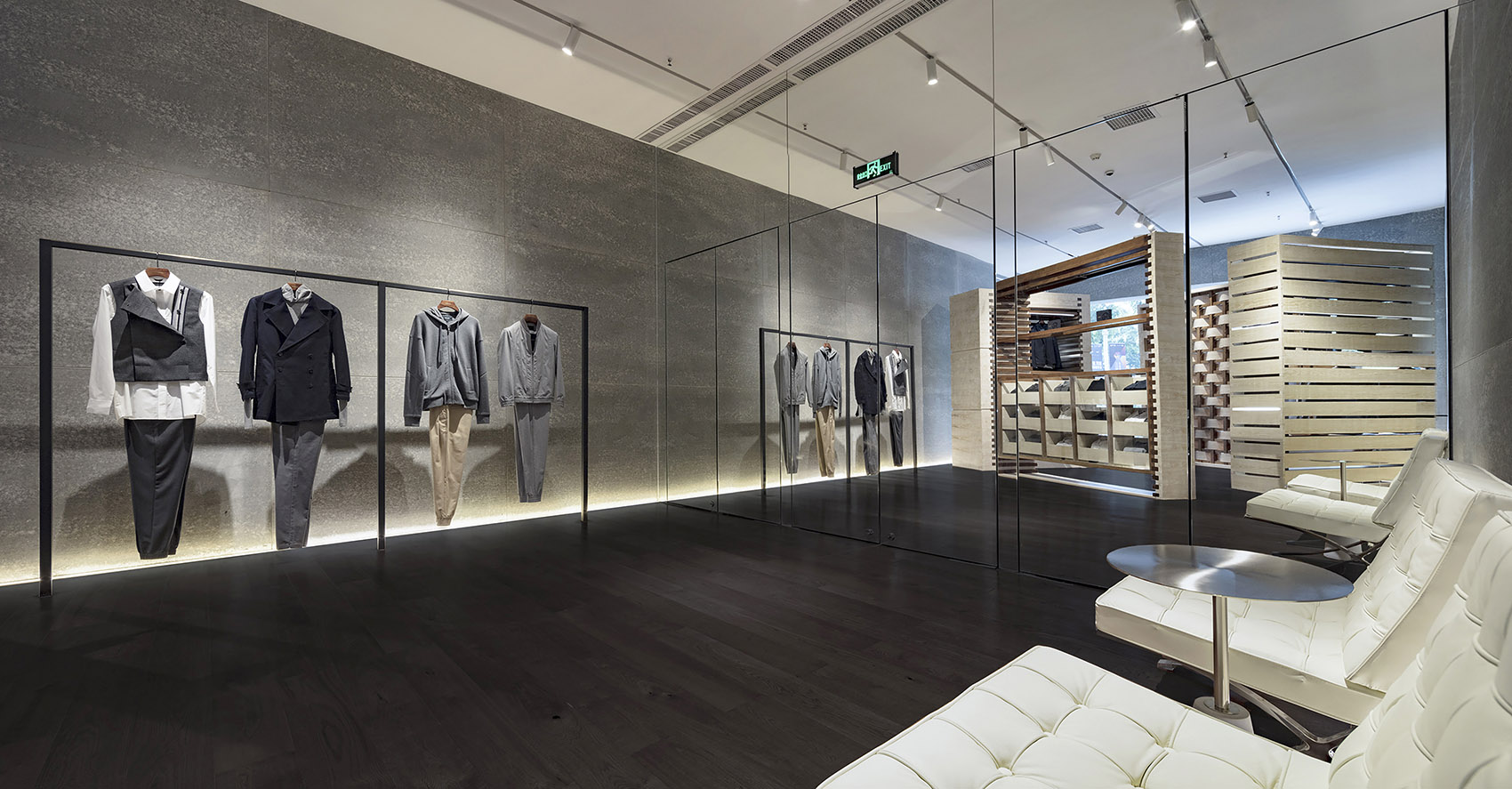
ARCHIEE的设计看重顾客视角的叙事,以现代细节装点传统店铺,令人印象深刻。此外,设计师赋予项目中的“非销售”空间不同的用途。随着社会发展,零售商店不断进化,未来的功能将不仅局限于购买。ARCHIEE的设计拓展了传统零售功能,让客户体验到“无用”空间的魅力。
Firstly, ARCHIEE’S focus was to create a narrative from the client’s perspective, overall imprinted with classic authenticity disrupted by the addition of small modern details. Secondly, the project embraces the benefits of having some spaces without merchandise, thereby welcoming lighter spaces with different uses for the design of a store. Retail stores should adapt to the demands of our modern society. The retail experience is no longer limited to just purchasing goods, which is why ARCHIEE’S design offers clients the alternative “useless” retail experience in addition to the conventional one.
▼材质细部,detail ©Kenshin Horikoshi
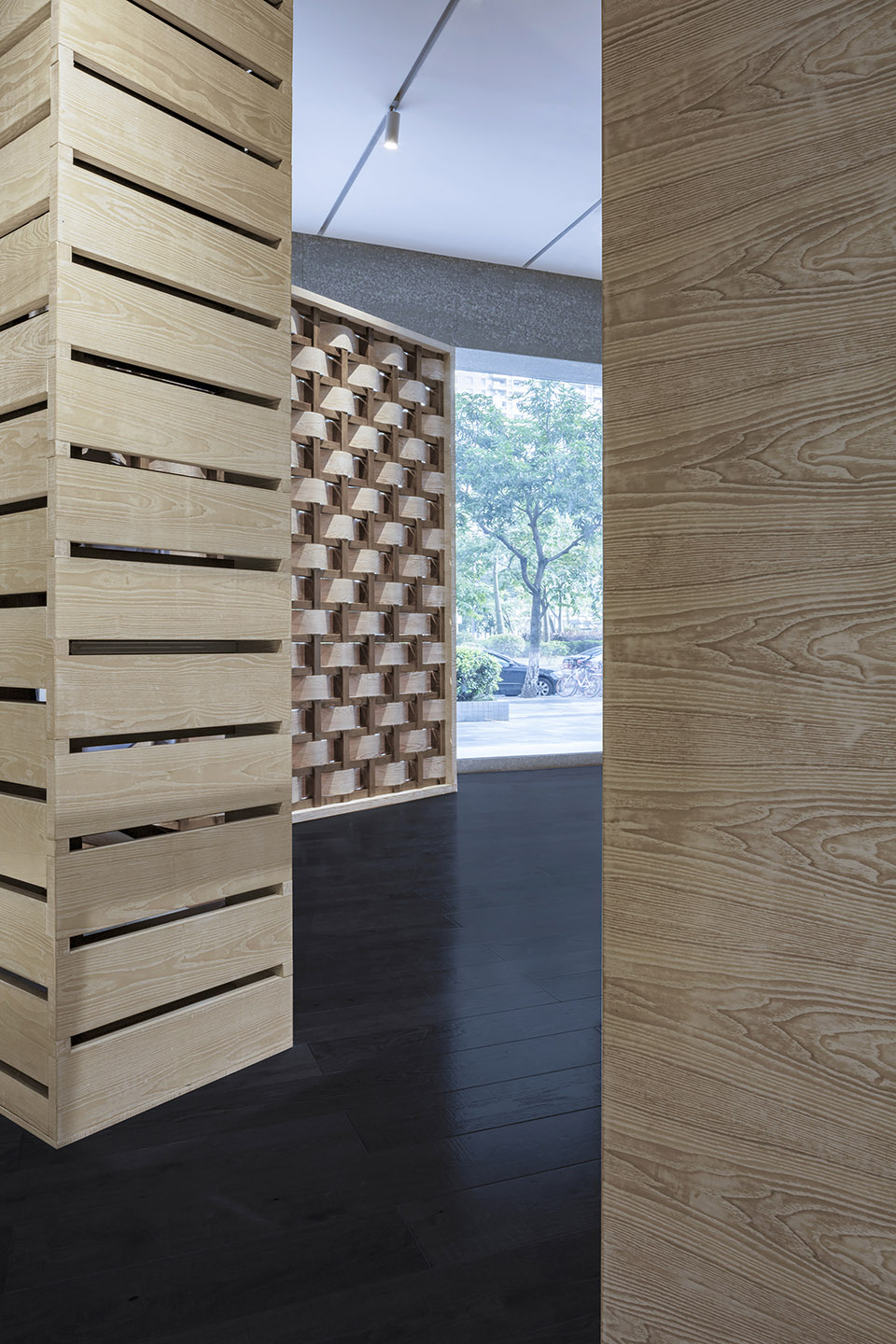

▼夜间外观,night view, exterior ©Kenshin Horikoshi

Type: interior design Program: fashion Area: 50-200m2 Date: 2020 Client: HANSCOOL Photo: Kenshin Horikoshi Place: China
